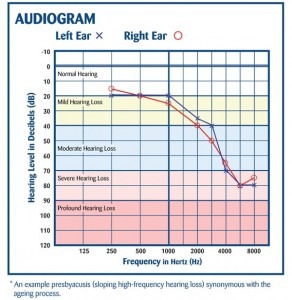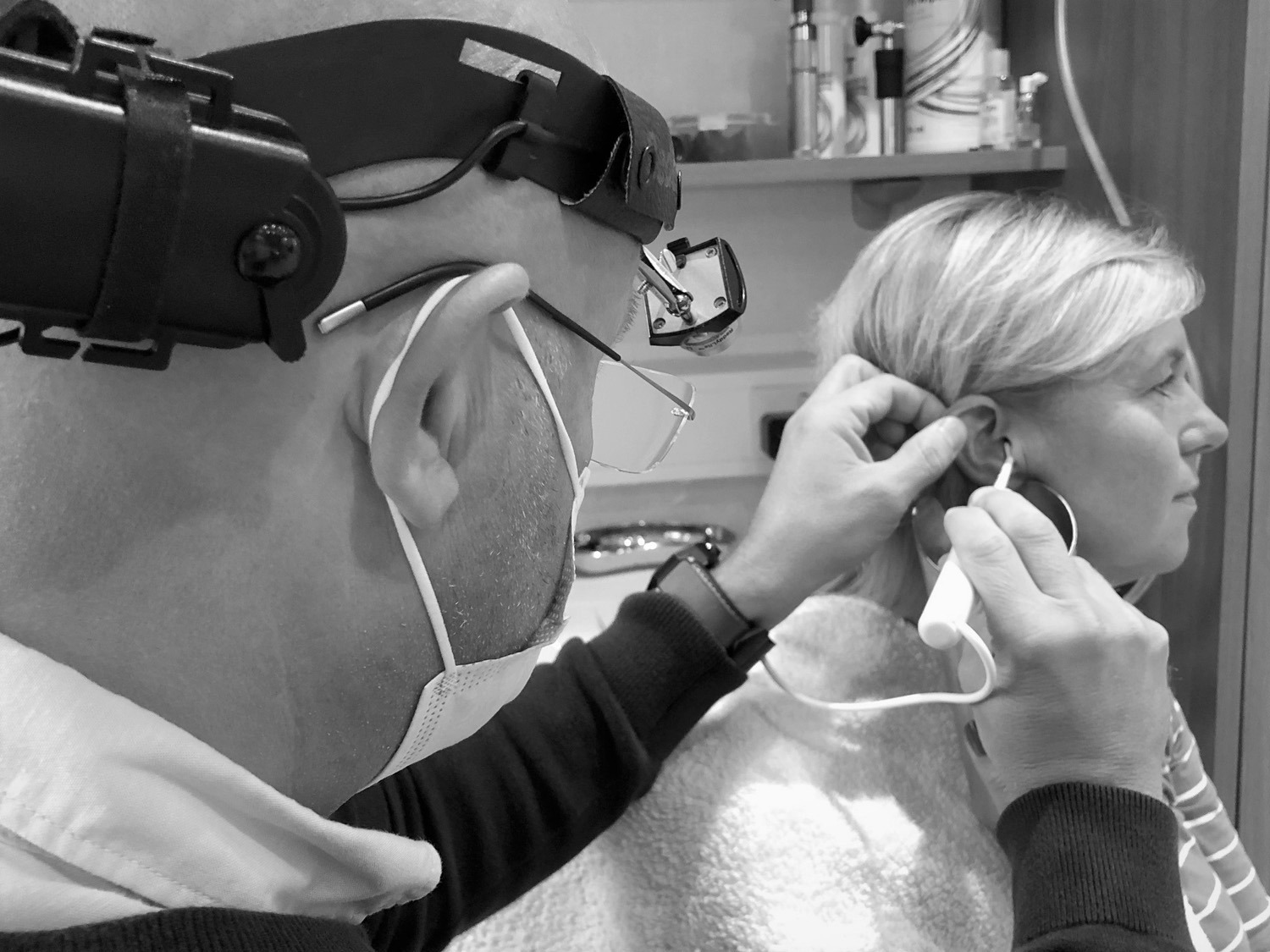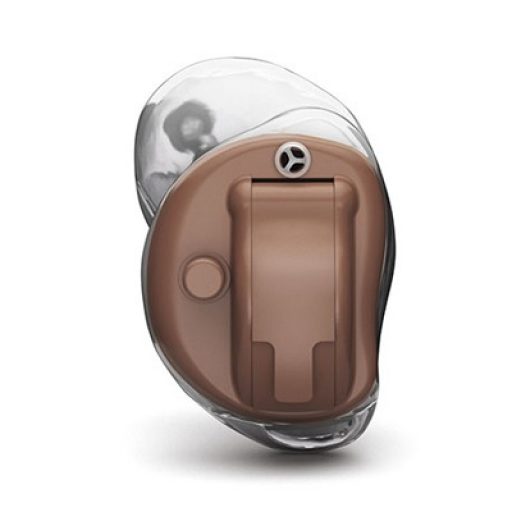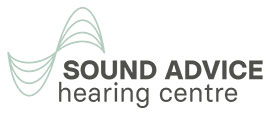In Branch Hearing Test
A full hearing assessment will take approximately 60 minutes and be carried out by one of our experienced Hearing Aid Audiologists. It is always advisable to bring a spouse, relative or friend for valued support and also to act as another set of ears to hear everything! If you have existing hearing aids it is also advisable to bring these along with you, with a list of any medication you are currently taking.
As well as free hearing assessments we are also able to provide much more in depth clinical diagnostic testing.
This can include all or any of the following:
- Extended Frequency range testing – to test all of your hearing spectrum up to 20,000 Hz
- Video Otoscopy – a video look in the ear canal
- Tympanometry – a test to measure the function of the middle ear
- Tinnitus Assessment (if required) – psychoacoustical tests like pitch & loudness matching
- Speech testing
- Speech in noise testing – an important test as that is where most people have hearing difficulties
The Assessment consists of:
A detailed case history is taken concentrating on any hearing and communication difficulties that may affect your lifestyle. Family and medical history will be discussed as there are a number of different causes of hearing loss, and we will want to consider anything inherited or genetic. This will also give us valuable information with regard to symptoms, potential causes, listening needs etc.
We will then carry out a full examination of the outer ear to establish the condition of the auricle (pinna), ear canal and eardrums to check if the ear is healthy or whether any abnormalities are present. We shall check on the amount of wax in the ear canal and advise accordingly, video otoscopy may be used to show the extent of any wax or the condition of the external ear.
 We will then perform a thorough hearing test in a sound proof booth which is essential for obtaining the most accurate results. This will produce an audiogram showing whether you have a hearing loss or not, if the test indicates a loss we will be able to show and explain the extent of any such loss.
Basically, the audiogram is the product of the hearing test, more precisely it is a graphical representation showing the loudness (intensity) levels at which specific pitches (frequencies) can only just be heard in each ear (hearing threshold), as well as some of the loudest sounds that we can hear without causing discomfort.
We will then perform a thorough hearing test in a sound proof booth which is essential for obtaining the most accurate results. This will produce an audiogram showing whether you have a hearing loss or not, if the test indicates a loss we will be able to show and explain the extent of any such loss.
Basically, the audiogram is the product of the hearing test, more precisely it is a graphical representation showing the loudness (intensity) levels at which specific pitches (frequencies) can only just be heard in each ear (hearing threshold), as well as some of the loudest sounds that we can hear without causing discomfort.● Pure tones (beeps and buzzes) are presented to each ear via a set of headphones (air conduction test) or ear inserts. The tones range from 250 Hz through to 8000Hz. These frequencies are used as they best represent everyday speech sounds and environmental sounds. Our clinical diagnostic testing enables us to test up to 20000 Hz
● The person being tested presses a response button every time a sound is heard or a sound is thought to be heard.
● The loudness of the tones are decreased until you can only just hear the sounds, this process will determine your hearing threshold.
● The same procedure is then repeated by placing a bone conductor which fits behind one ear (on the mastoid process of the worse ear). The tones generally used for this test are 500Hz, 1000Hz, 2000Hz and 4000Hz.
● If necessary masking will then be applied. Masking is basically the blotting out of one cochlea response (through a distracting stimulus) while the opposite ear is tested in isolation.
● Other tests may be carried out, such as threshold of discomfort. The threshold of discomfort (TOD) or Uncomfortable Level (UCL) is the intensity (loudness) level of sound, which causes an awareness of the impending onset of physical discomfort (i.e. when sounds become too loud for physical comfort). In normal hearing people this is 120dB HL (threshold of pain being normally about 140dB HL).
Video Otoscopy and Tinnitus Assessment is also available as part of our clinical diagnostic testing.
● Tympanometry may also be carried out. This is an examination used to test the condition of the middle ear and mobility of the eardrum (Tympanic Membrane) and the conduction of the middle ear bones, by creating variations in air pressure in the ear canal.
● Speech discrimination tests may also be part of your assessment. This basically assesses your ability to understand normal speech or speech in noise.
● All the results are recorded on the audiogram to produce a graphical representation of the test person’s hearing.
● After determining the exact nature of your hearing, the results will be reviewed together in detail, and related back to any problems that you have indicated during your case history to try and explain every detail carefully. If an aidable hearing loss exists then we will provide impartial professional advice on the various solutions that will best suit you and your listening requirements. This may involve hearing instruments, listening devices or other forms of help.
● In the event that you decide to go down the route of improving your hearing with hearing aids, the audiologist will discuss all the options available. Hearing aids are generally selected not only depending on the loss experienced by the person, but the lifestyle they desire, and the budget and features they would like their devices to have. While hearing aids cannot restore or cure hearing loss, they do make it easier for individuals to hear and communicate on a daily basis, thus improving their quality of life. Modern hearing aids are all digital and can be individually programmed to match a persons prescription. They are also available in a variety of different sizes, styles colours and technologies and can now be virtually invisible, being an independent company we have access to all the different manufacturers and all the different styles of hearing aids that are available on the market, this ensures you receive the best advice on what is best suited to your particular requirements.
At Sound Advice Hearing we offer a free trial period, this gives you the chance to try the hearing devices before purchasing them. There is no obligation and it gives you the chance to make sure you are happy with the hearing aids and the improvements that they make.
● It normally takes between 1 and 2 weeks to receive the hearing aids from the manufacturers, depending on style, whether they have ear moulds, accessories etc
● We will either make an appointment for your initial fitting at the time of your Hearing Assessment or we will phone to make the fitting appointment once we have received the hearing devices from the Manufacturer.
● Our Hearing Aid Audiologist will then go through a personal fitting process where they will check the fit of the instrument(s) and program them via a computer to match your individual hearing and lifestyle requirements You will be shown how to:
● Insert, remove and use your instrument(s) competently
● Clean, care and look after your instrument(s)
● Change the batteries and how to obtain new batteries
● Review your listening needs and expectations and discuss the most suitable rehabilitation program for your particular lifestyle
You will then be able to take the hearing aids away and try them in your own environments and see what the difference and improvement they make to your quality of life and of those around you.
● A follow up appointment will be made approximately 10 days later to assess your progress and experiences in relation to your rehabilitation program. This will have given you sufficient time to assess the hearing aids.
● We do provide a free aftercare service to provide you with the back up and attention that your hearing deserves. We pride ourselves on the quality of our aftercare service and aim to provide a service which is of the highest quality and is second to none. Once the hearing devices have been paid for we also provide a further 60 day money back guarantee.
Get a free hearing test with one of the UK's best hearing care specialists

Book a FREE hearing test

FREE online hearing test

Find your nearest clinic

